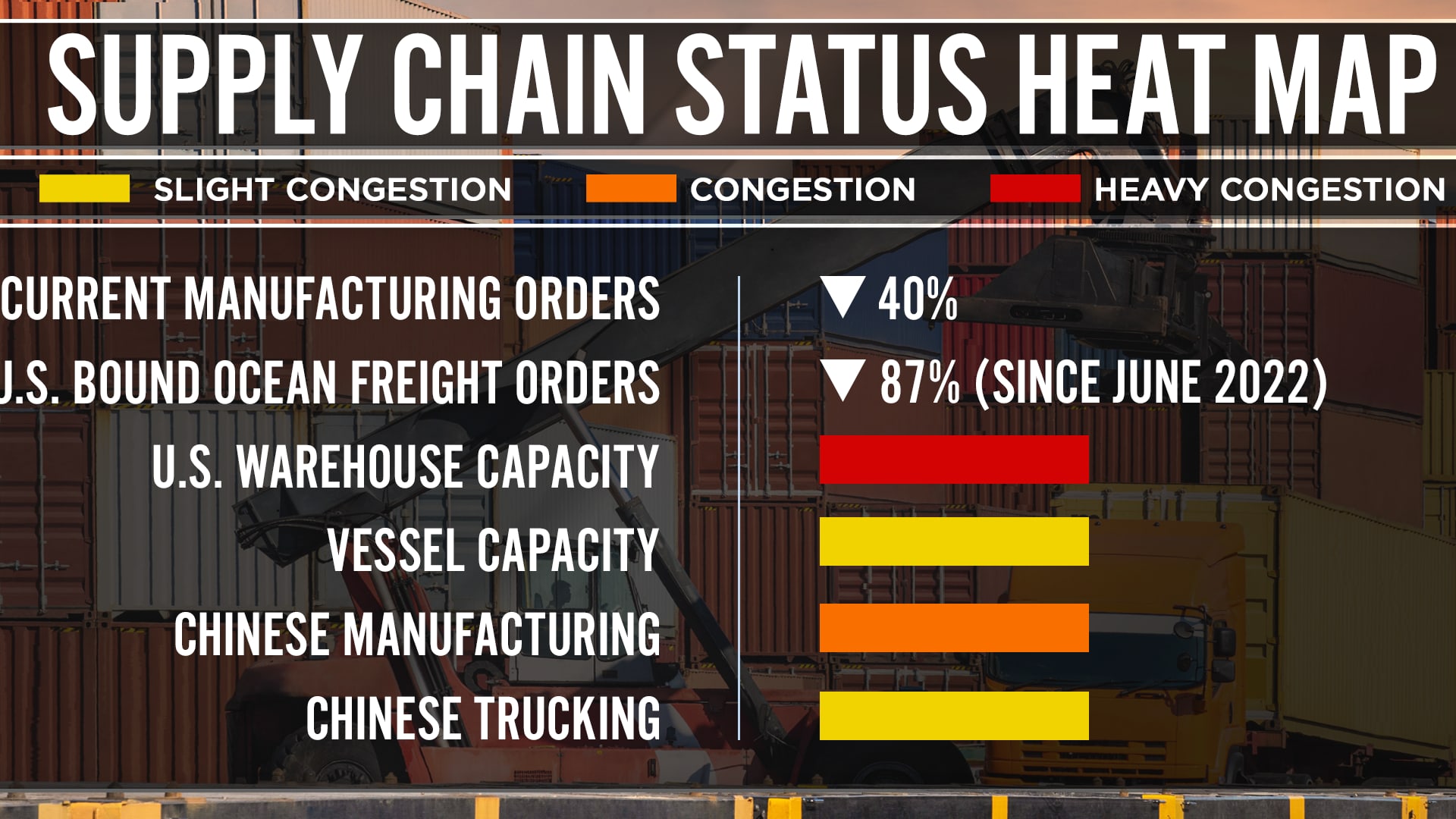
- Supply chain managers' biggest fear is a second pandemic wave after Lunar New Year.
- There are concerns about port and trucking labor shortages and delays.
- The impact of the first Covid wave in China was swift but not long lasting, according to Infinite Electronics, a global supplier of components, and it is not expecting operating conditions to deteriorate as badly this time.
Another wave of Covid infections in China is the biggest fear for supply chain managers, but those whose companies were impacted by the first pandemic wave are optimistic the impact will be short-lived.
"After talking with my team and a few of our suppliers in China, they're not expecting the next wave to be as extreme the second time around," said Dave Collier, COO of Infinite Electronics, a global supplier of electronic components. "The first surge was interesting. I remember distinctly speaking with our general manager of Asia Pacific on a Friday afternoon who told me one person at the plant was out with Covid. And by the following Monday, it was a third of our workforce and then half, and then it quickly peaked at about three-quarters of our workforce."
Collier said employees were back after two weeks.
"We saw with our production or our suppliers' production, a fairly significant decline from one to two weeks as the Covid impact filtered through, but we recovered quickly," Collier said.
As China has relaxed restrictions in its "Zero Covid" policy and reopened its economy, there have been reports of major outbreaks at factories and ports. Reduction in workforce is a major factor in the CNBC Supply Chain Heat Map for China, with heavy congestion at the ports.

The Chinese population has been traveling during the holiday to an extent not seen previously during the pandemic. Shanghai medical researchers projected in a recent study that major Chinese cities would already be through the worst of Covid by the end of 2022, while rural areas and remote provinces would see the worst infection spikes during mid-to late January, with the holiday, during which hundreds of millions of citizens usually travel, contributing. But a top Chinese government scientist recently said that with up to 80% of the population previously infected with Covid, the chances of a major outbreak over the next two to three months are remote.
Money Report
Get a weekly recap of the latest San Francisco Bay Area housing news. >Sign up for NBC Bay Area’s Housing Deconstructed newsletter.
"Some of our logistics partners I have heard from are concerned that there might be some potential labor issues at airports and ports," Collier said. "There are no details yet on how much if any delay it's going to cause, but there is worry."
ContainerX, a major platform for container logistics, said its data shows 73% of supply chain officials expect a disruption after Lunar New Year.
One of the biggest lessons learned during the pandemic by manufacturers and supply chain executives was to understand tier two, three, and four suppliers at a deeper level.
Collier said companies analyze sourcing statistics and how much of a product is sourced in a particular region of the world, but often don't go far enough into the supply chain data. "They make sure that they're diversified, but they're only looking at that first tier, so you really have to look back at the second and third tiers," he said. "And you'll find that often, the second and third tiers are coming from that region of the world that you've moved away from, for good reason. And so that analysis needs to be done. And I will tell you, those disruptions continue."
CNBC's Supply Chain Heat Map shows how the weaker global economic conditions are influencing U.S.- China shipping routes. Ocean freight bookings from China to the U.S. have plummeted 87 percent since June as companies pull back on orders.
"Manufacturing orders are down 40% to 50% in some cases in China, and so their factories are not necessarily idle, but certainly not at capacity," Collier said.

Infinite Electronics is expanding its manufacturing footprint to avoid China's Covid slowdowns. Earlier this month, the company acquired UK-headquartered Bulgin, which makes connectivity equipment and has operations in multiple regions.
"Supply assurance plans are not something that happens in the short term," Collier said. "These types of plans don't happen overnight. The U.S. is making tremendous investments along with its partners, particularly in semiconductors, to bring manufacturing back to the U.S., back to Mexico, to Canada. We are seeing companies make those moves. We're also considering those types of moves as we look at our long-term network strategy. So it's certainly happening. But it's going to take time, and it's gonna take massive investment. This is a transition that will take decades, not years."
CNBC Supply Chain Heat Map data providers are artificial intelligence and predictive analytics company Everstream Analytics; global freight booking platform Freightos, creator of the Freightos Baltic Dry Index; logistics provider OL USA; supply chain intelligence platform FreightWaves; supply chain platform Blume Global; third-party logistics provider Orient Star Group; global maritime analytics provider MarineTraffic; maritime visibility data company Project44; maritime transport data company MDS Transmodal UK; ocean and air freight rate benchmarking and market analytics platform Xeneta; leading provider of research and analysis Sea-Intelligence ApS; Crane Worldwide Logistics; DHL Global Forwarding; freight logistics provider Seko Logistics; Planet, provider of global, daily satellite imagery and geospatial solutions; and ITS Logistics provides port and rail drayage services in 22 coastal ports and 30 rail ramps throughout North America.






